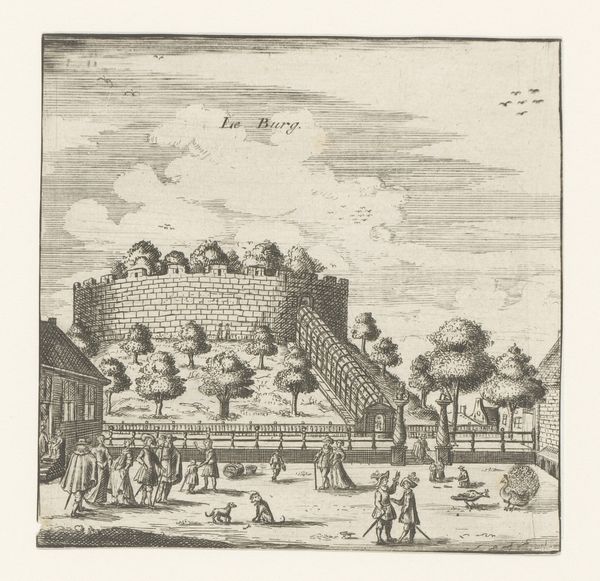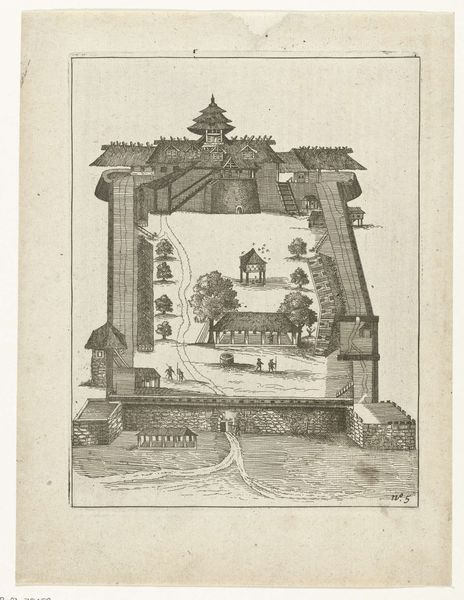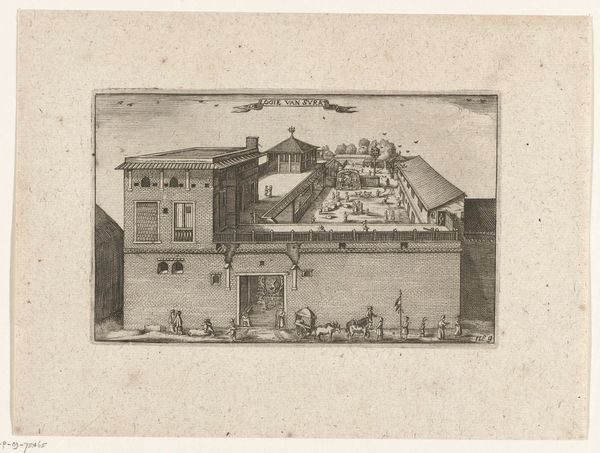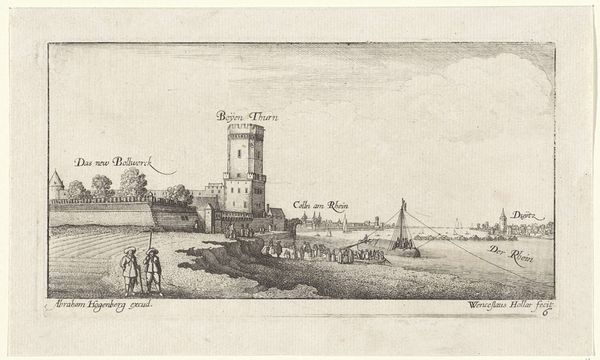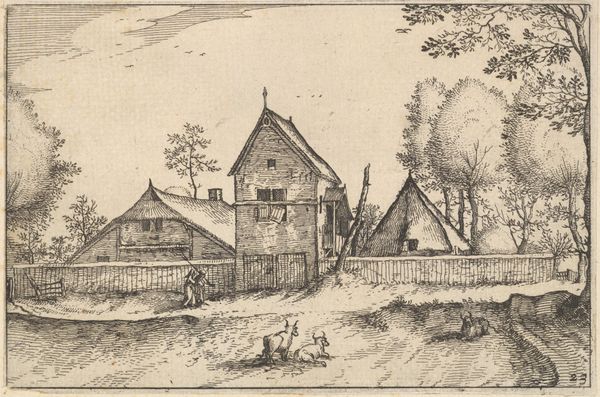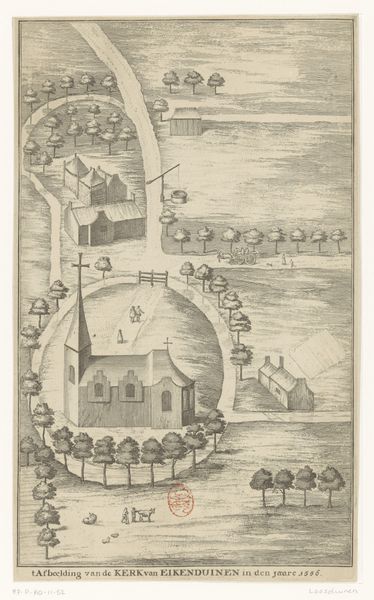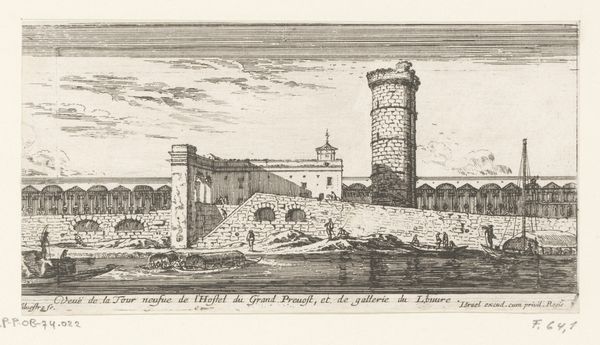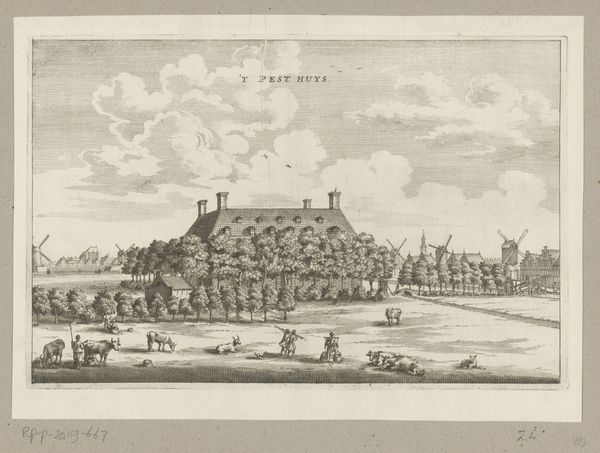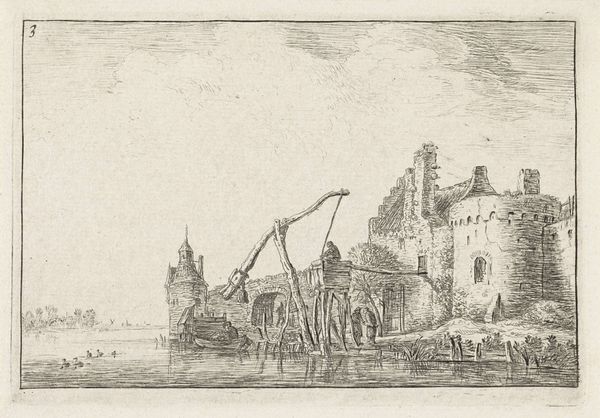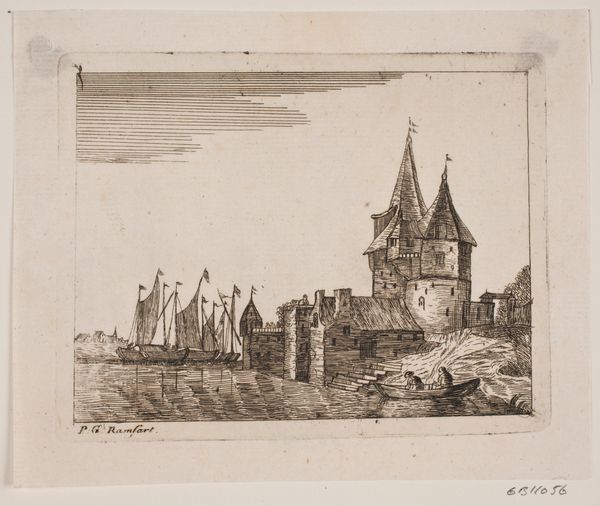
print, engraving, architecture
#
aged paper
#
toned paper
#
light pencil work
#
quirky sketch
#
dutch-golden-age
# print
#
pencil sketch
#
old engraving style
#
personal sketchbook
#
ink colored
#
line
#
sketchbook drawing
#
cityscape
#
sketchbook art
#
engraving
#
architecture
Dimensions: height 150 mm, width 205 mm
Copyright: Rijks Museum: Open Domain
Curator: This engaging engraving presents the Fort on Ambon seen from the water, dating back to the mid-17th century. It's currently part of the Rijksmuseum collection. It really speaks to the architectural and craft-based engraving practices of the era, doesn’t it? Editor: Immediately, I'm struck by the stark contrast between the rough, almost chaotic stone structure of the fort and the rigid formality of the European-style architecture placed atop it. It feels very symbolic of imposed power structures. Curator: Absolutely. The print’s materiality provides insight into its production – the types of inks, the paper available at the time and its methods of deployment in what was ultimately a colonial project. We have a physical record here of resource exploitation. Editor: I agree, and thinking about it from a postcolonial perspective, what does it mean to represent a fortified space? To depict its visual power and simultaneously omit the stories and lives of those who lived under its oppression? It’s a fraught image. Curator: Indeed, but notice how the engraver uses fine lines to describe the nuances of light on the water. There is care taken here. Consider the artist’s skill in representing the various textures and architectural elements and their understanding of perspective. Editor: I can appreciate the technical skill, of course. But isn’t the “care” you describe part of the problem? To romanticize this imposing symbol of Dutch East India Company dominance, subtly embedding a perspective that validates colonial exploitation? How can we view this without centering its effect on the Ambonese people? Curator: These prints, reproduced en masse, played a role in visualizing and distributing imperial ideologies, solidifying Europe’s power while impacting indigenous forms of representation. They offer an insight into an economy of image making that informed global perception. Editor: Exactly. The material object becomes evidence of cultural and political dominance. Curator: On closer inspection, one might consider not just the product of artistic creation, but the whole supply chain to consider the broader social conditions that enabled the depiction. It is still here, available to see. Editor: Precisely, a problematic monument made manifest as both image and historical artefact.
Comments
No comments
Be the first to comment and join the conversation on the ultimate creative platform.
